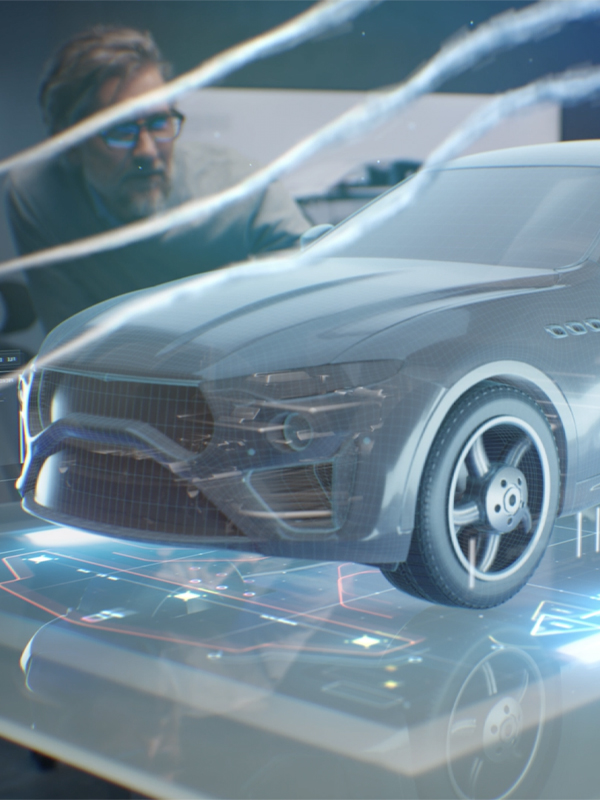Key Takeaways
- By using modern tools like extended reality XR technology, the automotive industry can collect richer and more immersive insights from users around the globe in real time.
- XR technology is revolutionizing market research by allowing for simulated test drives, remote focus groups, interviews, and virtual product launches.
- These tools also enhance market testing and concept validation, reducing the time and costs associated with traditional methods.
- Integration with other digital tools, such as data analytics and machine learning, provides a more holistic view of consumer behaviors and preferences.
- This shift in automotive market research could reshape the innovation landscape, turning technology into a real ally as we move toward a more human-centric future.
If we humans are seekers, curious, and looking for meaningful connections, then digital experiences can be considered destinations along our journey. They offer landscapes that fulfill our needs and spark our imagination. This means that research must act as the map that guides us, ensuring our destinations connect us with what we truly need. When used in harmony, they create a digital world where every interaction brings us closer to a more human-centered experience, making technology a true partner on our journey.
This shift from traditional to digital research has opened up new possibilities for product communities, allowing us to create experiences that are more aligned with users' needs and aspirations. When we engage with users in ways that are more interactive and meaningful, we ultimately craft products and experiences that feel genuinely connected to their lives. By embracing modern tools, we are able to make technology not just a part of our journey but a true partner in crafting the human experience.
Market research with extended reality (XR)
The landscape of research tools is evolving dramatically. Thanks to digital tools and technologies like extended reality and advanced analytics, we now have access to richer, more immersive insights, not to mention real-time data, that were just beyond our reach a few years ago. We can conduct virtual focus groups with participants from all over the world, simulate product interactions in 3D environments, and use real-time data analytics to uncover patterns in user behavior on a local and global scale.
The automotive industry has always been at the forefront of technological advancements, and with the emergence of extended reality technologies, the landscape of market and user research is undergoing a significant transformation. XR, encompassing virtual reality (VR), augmented reality (AR), and mixed reality (MR), is revolutionizing how automotive companies collect and analyze user data, facilitating remote and immersive research methods.
In this blog, we will explore how these tools enhance automotive market research, improve understanding of consumer behaviors, and ultimately lead to more human-centric and market-ready products.
Enhancing data collection and analysis
Traditional methods of data collection in the automotive industry, such as surveys and interviews, are often limited by geographic and logistical constraints and take a significant amount of time to synthesize data once collected. XR technologies break down these barriers by enabling researchers to gather data from a global audience in a virtual environment. This leads to more diverse and comprehensive data sets that provide a richer understanding of market needs and consumer preferences. Personalization is a key enabler for today’s modern experiences, and the more product teams can understand user needs, the more we can craft insightful, human-centered experiences.
Simulated test drives and product demos
One of the most exciting applications of XR in automotive market research is the ability to conduct simulated test drives and product demonstrations. Using VR, potential customers can experience a new vehicle's look and feel even before a vehicle goes into production. These immersive experiences provide valuable insights into user preferences and behaviors, allowing manufacturers to tailor their offerings to better meet consumer needs.
Simulated test drives also enable researchers to gather real-time feedback on various elements of a vehicle, such as interior design, driving dynamics, and technological features. This data can be used to refine and optimize products before they hit the market, reducing the risk of costly design flaws and enhancing customer satisfaction. For example, VR headsets are now like portable research units that we can bring to focus groups. With an Apple Vision Pro headset, we can give a consumer a very realistic idea of how a vehicle looks and feels. You can ask them to sit in the car, do a simulated drive experience, and learn how to answer calls with the infotainment unit. We can observe and collect data about their hand and eye positions and carefully learn if the new generation of digital consoles is helping or distracting drivers. This level of human factors design prior to vehicle production is unprecedented.
Remote / virtual focus groups and interviews
Traditional focus groups and interviews often require participants to be physically present, limiting the pool of potential participants. XR technology allows for remote focus groups and interviews, enabling researchers to connect with a more diverse audience worldwide. These virtual sessions can be conducted in interactive environments, replicating real-world settings and providing participants with a more engaging and authentic experience.
Using AR and VR, researchers can simulate various scenarios and environments, allowing participants to interact with virtual prototypes and provide feedback on design, functionality, and usability. This immersive approach to market research leads to more accurate and actionable insights, helping automotive companies develop products that truly resonate with their target audience.
Market testing and concept validation
Before launching a new vehicle, automotive manufacturers need to validate their concepts and test market viability. XR technologies offer innovative ways to conduct market testing and concept validation, reducing the time and cost associated with traditional methods.
Formative and summative research
Formative research, conducted during the early stages of product development, is crucial for identifying potential issues and opportunities for improvement. XR tools enable researchers to conduct formative research more effectively by creating virtual prototypes and conducting usability testing in a controlled environment. This allows for rapid iteration and refinement, ensuring that the final product meets consumer expectations.
Summative research, conducted after a product has been developed, assesses its overall effectiveness and impact. XR technologies provide new avenues for conducting summative research by enabling virtual product launches and collecting user feedback in real time. This allows manufacturers to gauge market reactions and make necessary adjustments before the product's full release.
Integration with other digital tools
The integration of XR technology with other digital tools, such as data analytics platforms and machine learning algorithms, further enhances the capabilities of automotive market research. By combining XR data with traditional market research methods, companies can gain a holistic view of consumer behaviors and preferences.
For example, machine learning algorithms can analyze data collected from virtual test drives and focus groups, identifying patterns and trends that may not be immediately apparent. This data-driven approach allows manufacturers to make informed decisions, optimize product offerings, and tailor marketing strategies to target specific customer segments.
The future of automotive market research
As technologies evolve, their impact on automotive market research is growing significantly. XR specifically allows companies to conduct immersive, remote research, gather detailed insights, and validate concepts in virtual environments. This is transforming how automotive companies approach product development and market strategies.
Integrating XR into automotive research is a major step toward a more connected, responsive, and innovative industry. In the end, what really stands out from this exploration of extended reality in automotive research is its transformative impact on both design and research communities.
For designers, XR opens up a world of inspiration and innovation, pushing the boundaries of what's possible and encouraging a user-centric approach that aligns perfectly with the core principles of design. Meanwhile, researchers are finding XR to be a game changer in overcoming traditional barriers, leading to richer insights and more accurate data collection. By embracing XR and its integration with tools like data analytics and machine learning, both designers and researchers can stay at the forefront of their fields, paving the way for future-ready approaches that resonate with consumers.
Sure, there are challenges to consider, like ethical issues and data privacy, but addressing these head-on only strengthens the conversation around these powerful tools. Ultimately, the real magic happens when design and research come together, collaborating to craft experiences that truly enrich our lives. As we look ahead, embracing XR technologies is more than just a smart move—it's a way to redefine the landscape of automotive innovation, making technology a true partner in our journey toward a more connected and human-centric future.





